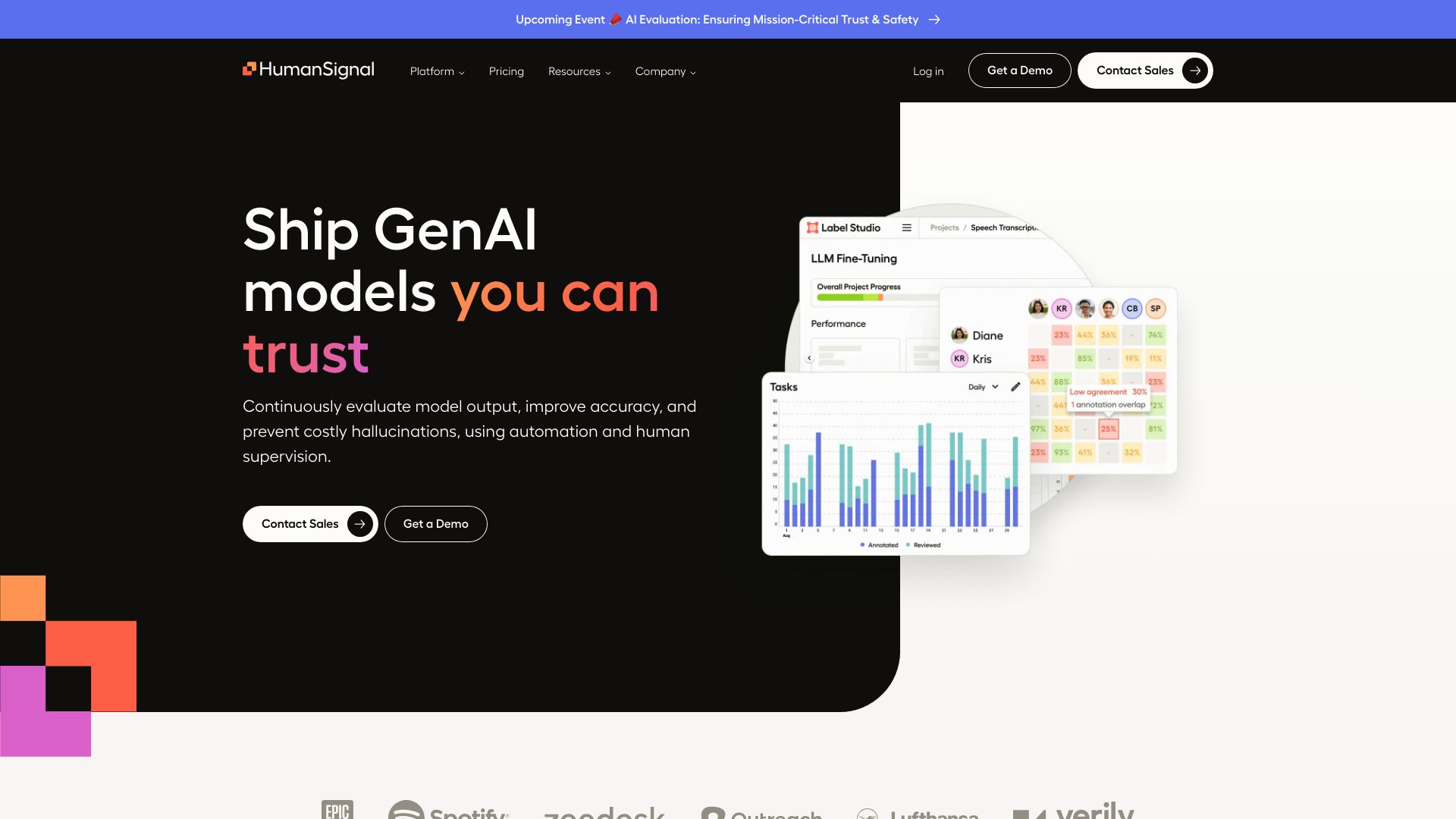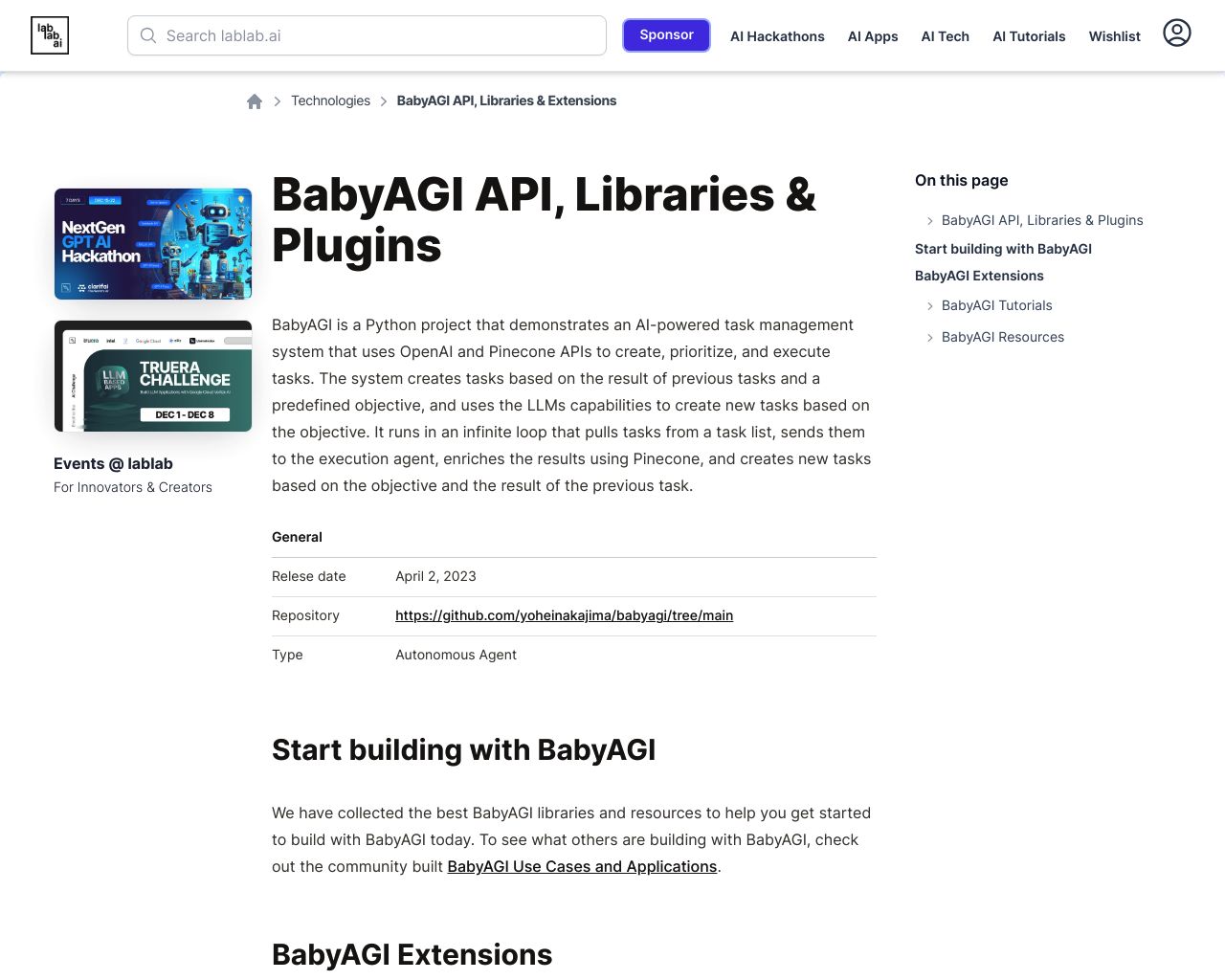AI agents revolutionize how businesses tackle complex tasks, from data labeling to task management. Adala and BabyAGI represent two innovative approaches in this rapidly evolving field. Adala specializes in autonomous data labeling, harnessing iterative learning to enhance agent performance across diverse data types. BabyAGI simulates human-like cognition for task management, autonomously generating and prioritizing tasks. This comparison delves into their unique features, strengths, and limitations, contrasting them with SmythOS, our comprehensive AI development platform. We’ll explore how each solution addresses key challenges in AI agent development, examining aspects like multimodal capabilities, security features, and ease of use. Whether you’re a developer seeking powerful APIs, a business leader focused on scalability, or an AI enthusiast exploring new frontiers, this analysis will guide you through the landscape of AI agent platforms, helping you choose the best fit for your needs.
Adala Overview
Adala revolutionizes data labeling with its open-source framework for autonomous AI agents. These agents learn from ground truth datasets, evolving into efficient prediction engines for large-scale data labeling tasks. Adala’s approach combines machine intelligence with human expertise, ensuring high-quality labeled data while reducing manual effort.
Adala revolutionizes data labeling with its open-source framework for autonomous AI agents… evolving into efficient prediction engines for large-scale data labeling tasks.


Developed by Adala, formerly known as Heartex, this platform caters to data scientists and AI researchers seeking to streamline their data preprocessing workflows. Adala shines in tasks like text classification, image annotation, and video labeling, making it invaluable for machine learning projects across various domains.
Adala’s key strengths lie in its iterative learning process and multimodal capabilities. Agents continuously improve their performance through repeated interactions with datasets, adapting to complex labeling tasks. The platform supports diverse data types, allowing users to work with text, images, and videos seamlessly.
Adala’s key strengths lie in its iterative learning process and multimodal capabilities. Agents continuously improve their performance… adapting to complex labeling tasks.
While Adala excels in autonomous labeling, it lacks some features found in comprehensive AI development platforms. There’s no mention of a visual builder or no-code editor, which might limit accessibility for non-technical users. However, its focus on data labeling automation and integration with popular AI models like GPT-4 positions it as a specialized tool for data-centric AI development.
Adala’s emphasis on explainability and transparency addresses growing concerns about AI reliability. By integrating human feedback and providing detailed activity logs, the platform ensures that AI-driven decisions remain interpretable and aligned with user expectations. This approach fosters trust in the labeled datasets, crucial for developing robust AI models.
BabyAGI Overview
BabyAGI pioneers open-source artificial intelligence for autonomous task management. Developed by Yohei Nakajima, BabyAGI simulates human-like cognitive processes, generating and prioritizing tasks based on given objectives.


BabyAGI’s core functionality revolves around autonomous task creation, prioritization, and execution. The system continuously learns from previous tasks, adapting to new challenges like humans do. It leverages advanced natural language processing from OpenAI and vector databases such as Pinecone for seamless task result storage and retrieval.
BabyAGI’s core functionality revolves around autonomous task creation, prioritization, and execution. The system continuously learns from previous tasks, adapting to new challenges like humans do.
Key features of BabyAGI include its ability to generate new tasks autonomously, efficiently prioritize workloads, and integrate memory and learning capabilities for personalized, adaptive task management. This versatility allows BabyAGI to excel in various fields, from customer service to healthcare and education.
While BabyAGI offers impressive capabilities, it lacks some features found in more comprehensive platforms. The absence of a visual builder or no-code editor may limit accessibility for non-technical users. Additionally, there’s no mention of specific debugging tools or audit logs for analytics, which could hinder troubleshooting and performance tracking.
BabyAGI’s vision aims to bridge the gap between narrow AI applications and human-like intelligence. By fostering systems that learn and think similarly to humans, BabyAGI strives to enhance productivity and efficiency across industries. Its adaptable, task-driven approach positions it as a valuable tool in the ongoing development of artificial general intelligence.
Feature Comparison
Adala and BabyAGI offer distinct approaches to AI agent development, each with unique strengths and limitations. Adala excels in autonomous data labeling tasks, leveraging iterative learning processes to improve agent performance over time. Its multimodal capabilities enable efficient handling of diverse data types, including text, images, and video. BabyAGI, on the other hand, focuses on simulating human-like cognitive processes for task management, generating and prioritizing tasks based on given objectives.
While both platforms support AI agents and environments for development and production, they differ significantly in their core components. Adala provides robust support for multimodal data processing and human-AI interaction, essential for data labeling tasks. BabyAGI emphasizes autonomous task creation and prioritization, mimicking human cognitive processes. Neither platform offers a visual builder or no-code editor, which may limit accessibility for non-technical users.
In terms of security, both Adala and BabyAGI implement data encryption and OAuth authentication. However, they lack specific features like IP control or advanced audit logs for analytics. This gap in security and monitoring capabilities could pose challenges for enterprise-level deployments or highly regulated industries. SmythOS addresses these limitations by offering comprehensive security features, including constrained alignment, IP control, and detailed audit logs, making it a more suitable choice for organizations with stringent security requirements.
Feature Comparison Table
| Adala | BabyAGI | SmythOS | |
|---|---|---|---|
| CORE FEATURES | |||
| Hosted Agents (Dev, Production) | ✅ | ❌ | ✅ |
| Environments (Dev, Production) | ✅ | ❌ | ✅ |
| Visual Builder | ❌ | ❌ | ✅ |
| No-Code Options | ❌ | ❌ | ✅ |
| Explainability & Transparency | ✅ | ❌ | ✅ |
| Human-AI Interaction | ✅ | ❌ | ✅ |
| Audit Logs for Analytics | ❌ | ❌ | ✅ |
| Agent Work Scheduler | ✅ | ❌ | ✅ |
| Logs & Monitoring | ✅ | ❌ | ✅ |
| SECURITY | |||
| Constrained Alignment | ✅ | ❌ | ✅ |
| IP Control | ❌ | ❌ | ✅ |
| COMPONENTS | |||
| Foundation AIs | ✅ | ❌ | ✅ |
| Data Lakes | ❌ | ❌ | ✅ |
| DEPLOYMENT OPTIONS (EMBODIMENTS) | |||
| Staging Domains | ❌ | ❌ | ✅ |
| Production Domains | ❌ | ❌ | ✅ |
| Deploy as Scheduled Agent | ❌ | ❌ | ✅ |
| DATA LAKE SUPPORT | |||
| Sitemap Crawler | ❌ | ❌ | ✅ |
| YouTube Transcript Crawler | ❌ | ❌ | ✅ |
Conclusion
Adala and BabyAGI offer unique approaches to AI development, each with distinct strengths. Adala excels in autonomous data labeling, while BabyAGI focuses on task management and prioritization. Both platforms demonstrate the potential of AI in streamlining complex processes, yet they lack certain features that limit their versatility and accessibility.
SmythOS emerges as the superior choice, addressing the limitations of both Adala and BabyAGI while offering a comprehensive suite of features. Our platform’s visual builder and no-code editor make AI development accessible to a broader audience, including non-technical users. We provide robust security measures, including constrained alignment and detailed audit logs, ensuring enterprise-grade protection and compliance.
Unlike Adala and BabyAGI, SmythOS offers a complete ecosystem for AI agent development and deployment. Our platform supports multimodal interactions, problem-solving capabilities, and seamless integration with various APIs and data sources. This versatility allows users to create sophisticated AI solutions for diverse applications, from customer service chatbots to complex data analysis tools.
Experience the future of AI development with SmythOS. Create a free account today and discover how our platform can transform your AI initiatives. With our extensive library of templates and seamless deployment options, you’ll be able to build and launch AI agents in minutes, not months. Don’t just adapt to the AI revolution – lead it with SmythOS.
Last updated:
Disclaimer: The information presented in this article is for general informational purposes only and is provided as is. While we strive to keep the content up-to-date and accurate, we make no representations or warranties of any kind, express or implied, about the completeness, accuracy, reliability, suitability, or availability of the information contained in this article.
Any reliance you place on such information is strictly at your own risk. We reserve the right to make additions, deletions, or modifications to the contents of this article at any time without prior notice.
In no event will we be liable for any loss or damage including without limitation, indirect or consequential loss or damage, or any loss or damage whatsoever arising from loss of data, profits, or any other loss not specified herein arising out of, or in connection with, the use of this article.
Despite our best efforts, this article may contain oversights, errors, or omissions. If you notice any inaccuracies or have concerns about the content, please report them through our content feedback form. Your input helps us maintain the quality and reliability of our information.
Alexander De Ridder
Co-Founder, Visionary, and CTO at SmythOS. Alexander crafts AI tools and solutions for enterprises and the web. He is a smart creative, a builder of amazing things. He loves to study “how” and “why” humans and AI make decisions.
Explore All Comparison Articles
Decisions vs. Sola: AI Workflow Automation Showdown
AI-powered workflow automation platforms revolutionize how businesses streamline operations and boost productivity. This comparison explores Decisions vs. Sola, and SmythOS,…
DeepOpinion vs. Sola: Comparing AI Automation Platforms
AI-powered automation platforms revolutionize business operations, but choosing the right solution can be challenging. This comparison of DeepOpinion vs. Sola,…
DevGPT vs. Sola: AI-Powered Development Tools Compared
AI-powered development tools revolutionize software creation, offering unprecedented efficiency and capabilities. This comprehensive review compares DevGPT vs. Sola, and SmythOS,…
Fine AI vs. Sola: Comparing AI Automation Tools
AI-powered automation transforms software development and business workflows, offering unprecedented efficiency and innovation. Fine AI vs. Sola present distinct approaches…
FlowiseAI vs. Sola: Comparing AI Automation Platforms
AI-powered automation revolutionizes business operations, driving efficiency and innovation across industries. FlowiseAI vs. Sola offer distinct approaches to harness this…
Gooey AI vs. Sola: AI-Powered Automation Platforms Compared
AI-powered automation platforms revolutionize how businesses streamline operations and enhance productivity. This comparison delves into Gooey AI vs. Sola, two…

